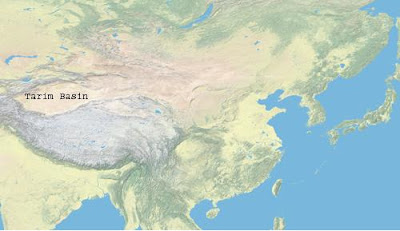Pushy Women
Women in sumo wrestling?! WHAT?! This might be your
reaction, too, if you had watched this short (23 min) documentary on this
atypical sport, titled Pushy Women, directed by Caro MacDonald.
Although it was very interesting to watch, the film left much to be desired.
There was no narration to speak of, which made the inconsistent subtitles even
harder to contextualize, let alone action on screen. Overall, the film’s
content was broad and gave personal insight into the daily life of a woman sumo
wrestler in Japan. The film covered their workouts, practice sessions,
interdisciplinary training in other forms of martial arts like judo, various
injuries they sustained, mealtimes, recreational activities like karaoke, and
ended with an interscholastic competition.
I had no idea this even existed and was shocked when I saw
the film. Like any sensible person, as soon as I got to my computer, I
immediately searched sumo on youtube and wikipedia to quickly find out more
about it. It is a sport that was until very recently unique to Japan, although
it has various similarities to other forms of wrestling and martial arts. Two
wrestlers, or the rikishi, are in a
ring, known as the dohyo, and
grapple with each other trying to force the other either out of the circle or
to touch the ground with a part of their body other than the bottoms of their
feet. What I found most strange is that unlike real wrestling in the United
States (not WWE or any of that mindless showcasing), there was until recently only
one open weight class. This means that a 500lb wrestler could be facing off
against a 200lb wrestler. The crazy thing is, is that it seems that these
particular matches are what make sumo wrestling so exciting, when there is an
incredible upset.
Women, however, were not allowed to participate. It is
traditionally held in the Shinto belief that women are inherently impure. This
is connected to menstruation; there are many places in Japan today in which
women may not be as a result of this system of beliefs. When women began
practicing the sport, it was very difficult for them because few were willing
to work with female athletes to help them develop skills and many facilities
did not allow women to practice, since the dohyo is considered sacred. Since the
recent internationalization of the sport and inclusion of women in the post-war
period (after 1945), sumo wrestling has not only stayed prominent in Japan, but
has also gained significant popularity in Eastern Europe.
Dr. Ayako Kano, Undergraduate Chair of the EALC department
at the University of Pennsylvania, gave a short presentation of some research
she had done on the film. She broke down her research on sumo wrestling into
four basic components – as a sport, as a ritual, as a business, and as a spectacle
for entertainment. Her conclusions were that the recent interest in women’s
participation has not risen from greater gender equality, such is the case with
many women’s sports in the United States (women’s volleyball, hockey,
basketball, etc.), but has risen from a desire to internationalize the sport.
This internationalization, Dr. Kano argued, is what is
driving women’s sumo wrestling. I could not be farther from an expert on the
subject, but this seems to make sense. Even the Japanese name of the sport
suggests this trend. Women’s sumo wrestling is called shin sumo, or “new sumo,” not onna sumo, or “women’s sumo,” like one might expect. This is
presumably intended to emphasize the distinction between the traditional sport,
which banned women, to the new one which is inclusive.
Dr. Kano also mentioned that participation in martial arts
will be required in Japanese middle schools next academic year. It will be
interesting to see if amateur sumo takes off or unenthusiastic parents sentence
it to the dusty pages of history books.
The screening and presentation were held in the Rainey
Auditorium of the Penn Museum at 2:00PM December 4, 2011. The event was
sponsored by the East Asian Studies Department, Penn Cinema Studies, and the
Penn Humanities Forum.

Comments
Post a Comment
We follow the House Rules as outlined by the BBC here.